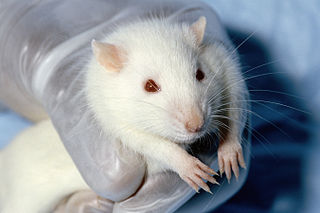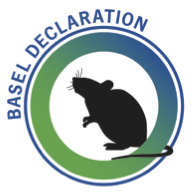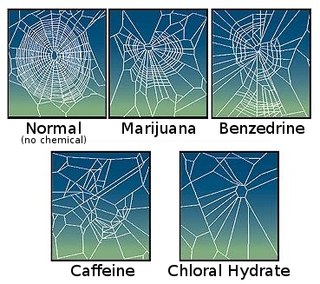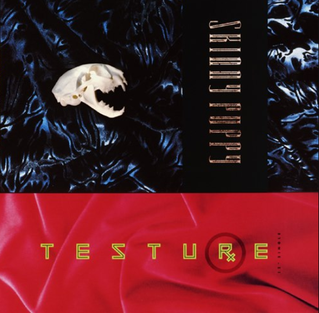 W
WAnimal testing, also known as animal experimentation, animal research and in vivo testing, is the use of non-human animals in experiments that seek to control the variables that affect the behavior or biological system under study. This approach can be contrasted with field studies in which animals are observed in their natural environments or habitats. Experimental research with animals is usually conducted in universities, medical schools, pharmaceutical companies, defense establishments and commercial facilities that provide animal-testing services to industry. The focus of animal testing varies on a continuum from pure research, focusing on developing fundamental knowledge of an organism, to applied research, which may focus on answering some question of great practical importance, such as finding a cure for a disease. Examples of applied research include testing disease treatments, breeding, defense research and toxicology, including cosmetics testing. In education, animal testing is sometimes a component of biology or psychology courses. The practice is regulated to varying degrees in different countries.
 W
WAnimal Free Research UK (AFRUK), formerly the Dr Hadwen Trust, is a UK medical research charity that funds and promotes non-animal techniques to replace animal experiments. Established in 1970, the work undertaken by Animal Free Research UK develops reliable science whilst avoiding animal testing.
 W
WThe Animal Liberation Front (ALF) is an international, leaderless, decentralized political and social resistance movement that engages in and promotes non-violent direct action in protest against incidents of animal cruelty. It originated in the 1970s from the Bands of Mercy. Participants state it is a modern-day Underground Railroad, removing animals from laboratories and farms, destroying facilities, arranging safe houses, veterinary care and operating sanctuaries where the animals subsequently live. Critics have labelled them as terrorists.
 W
WAnimal testing regulations are guidelines that permit and control the use of non-human animals for scientific experimentation. They vary greatly around the world, but most governments aim to control the number of times individual animals may be used; the overall numbers used; and the degree of pain that may be inflicted without anesthetic.
 W
WThe Association for Assessment and Accreditation of Laboratory Animal Care International, or AAALAC, is a private, nonprofit organization that promotes the humane treatment of animals in science through voluntary accreditation and assessment programs. The program started in 1965, when leading veterinarians and researchers organized the American Association for Accreditation of Laboratory Animal Care, or AAALAC. In 1996, AAALAC changed its name to the Association for Assessment and Accreditation of Laboratory Animal Care International. The name change reflects the organization's growth in other countries, and its commitment to enhancing life sciences and quality animal care around the world. Today, more than 900 organizations worldwide are accredited.
 W
WThe Basel Declaration is a call for greater transparency and communication on the use of animals in research. It is supported by an international scientific non profit society, the Basel Declaration Society, a forum of scientists established to foster the greatest dissemination and acceptance of the Declaration, and the dialogue with the public and stakeholders.
 W
WThe Basel Declaration Society is a scientific association established on October 5, 2011, with the aim of promoting the dissemination and advancement of the Basel Declaration, the ever more important international manifest in favor of research, care for animal welfare, and establishment of a transparent dialogue between scientists and stakeholders.
 W
WBateson's cube is a model of the cost–benefit analysis for animal research developed by Professor Patrick Bateson, president of the Zoological Society of London.
 W
WThe Biomedical Primate Research Centre (BPRC) is Europe's largest primate animal testing research centre. It is a scientific research institute that performs research that contributes to the identification and development of new medicines against deadly diseases. It is located in Rijswijk and employs about 110 people.
 W
WSir Colin Blakemore,, Hon, is a British neurobiologist, specialising in vision and the development of the brain, who is Yeung Kin Man Professor of Neuroscience and Senior Fellow of the Hong Kong Institute for Advanced Study, City University of Hong Kong. He is also a Distinguished Senior Fellow in the Institute of Philosophy, School of Advanced Study, University of London and Emeritus Professor of Neuroscience at the University of Oxford. He was formerly Chief Executive of the British Medical Research Council (MRC). He is best known to the public as a communicator of science but also as the target of a long-running animal rights campaign. According to The Observer, he has been both "one of the most powerful scientists in the UK" and "a hate figure for the animal rights movement".
 W
WThe boiling frog is a fable describing a frog being slowly boiled alive. The premise is that if a frog is put suddenly into boiling water, it will jump out, but if the frog is put in tepid water which is then brought to a boil slowly, it will not perceive the danger and will be cooked to death. The story is often used as a metaphor for the inability or unwillingness of people to react to or be aware of sinister threats that arise gradually rather than suddenly.
 W
WThe Boyd Group is a Britain-based, independent think tank considering issues relating to animal testing.
 W
WThe Johns Hopkins University Center for Alternatives to Animal Testing (CAAT) has worked with scientists, since 1981, to find new methods to replace the use of laboratory animals in experiments, reduce the number of animals tested, and refine necessary tests to eliminate pain and distress. CAAT is an academic, science-based center affiliated with the Johns Hopkins Bloomberg School of Public Health.
 W
WCentral Institute for Experimental Animals (CIEA) (実験動物中央研究所) is a research center for experimental animals in Japan. It was founded by Tatsuji Nomura in 1952 with the mission of improving the level of biomedical research.
 W
WChelates in animal feed are organic forms of essential trace minerals such as copper, iron, manganese and zinc.
 W
WConditioned place preference (CPP) is a form of Pavlovian conditioning used to measure the motivational effects of objects or experiences. By measuring the amount of time an animal spends in an area that has been associated with a stimulus, researchers can infer the animal's liking for the stimulus. This paradigm can also be used to measure conditioned place aversion with an identical procedure involving aversive stimuli instead. Both procedures usually involve mice or rats as subjects. This procedure can be used to measure extinction and reinstatement of the conditioned stimulus. Certain drugs are used in this paradigm to measure their reinforcing properties. Two different methods are used to choose the compartments to be conditioned, and these are biased vs. unbiased. The biased method allows the animal to explore the apparatus, and the compartment they least prefer is the one that the drug is administered in and the one they most prefer is the one where the vehicle is injected. This method allows the animal to choose the compartment they get the drug and vehicle in. In comparison, the unbiased method does not allow the animal to choose what compartment they get the drug and vehicle in and instead the researcher chooses the compartments.
 W
WThe conflict procedure is an experiment often used in scientific research to quantify anxiety levels by measuring changes in punished/unpunished responses. It is often used to screen drugs for their potential to inhibit anxiety.
 W
WConsumer demand tests for animals are studies designed to measure the relative strength of an animal's motivation to obtain resources such as different food items. Such demand tests quantify the strength of motivation animals have for resources whilst avoiding anthropomorphism and anthropocentrism.
 W
WPsychoactive drugs, such as caffeine, amphetamine, mescaline, lysergic acid diethylamide (LSD), marijuana, chloral hydrate, theophylline, IBMX and others, can have strong effects on certain animals. It is believed that plants developed caffeine as a chemical defense against insects.
 W
WThe European Convention for the Protection of Vertebrate Animals used for Experimental and other Scientific Purposes, sometimes simply referred to as the animal experimentation convention or laboratory animals convention, is an animal welfare treaty of the Council of Europe regarding animal testing, adopted on 18 March 1986 in Strasbourg, and effective since 1 January 1991.
 W
WThe European Partnership for Alternative Approaches to Animal Testing (EPAA) promotes the application of Russell and Burch’s 3Rs principles in meeting regulatory requirements for products such as pharmaceuticals, chemicals, soaps, detergents and cosmetics. The EPAA covers research and development, as well as the use of 3Rs approaches in regulatory compliance and communication and dissemination.
 W
WThe Federation of European Laboratory Animal Science Associations is a pan-European stakeholder organisation, representing common interests in the furtherance of laboratory animal science in Europe and beyond. The organisation was founded in 1978 and is an umbrella organisation for European national or multinational associations.
 W
WA filtered air positive pressure environment in laboratory animal science is a space that is under positive pressure with respect to the outside world. In this way, no germs that could affect the lab animals or that are a threat to the SPF status can enter the facility. To bring in new air, high efficiency particulate air filters (HEPA) are used.
 W
WThe Foundation for Biomedical Research (FBR) is an American nonprofit organization, 501(c)(3), located in Washington, DC. Established in 1981, the organization is dedicated to informing the news media, teachers, and other groups about the need for lab animals in medical and scientific research. The organization, together with its partner, the National Association for Biomedical Research (NABR), argues that promoting animal research leads to improved health for both humans and animals.
 W
WThe grimace scale (GS), sometimes called the grimace score, is a method of assessing the occurrence or severity of pain experienced by non-human animals according to objective and blinded scoring of facial expressions, as is done routinely for the measurement of pain in non-verbal humans. Observers score the presence or prominence of “facial action units" (FAU), e.g. Orbital Tightening, Nose Bulge, Ear Position and Whisker Change. These are scored by observing the animal directly in real-time, or post hoc from photographs or screen-grabs from videos. The facial expression of the animals is sometimes referred to as the pain face.
 W
WHuntingdon Life Sciences (HLS) was a contract research organisation (CRO) founded in 1951 in Cambridgeshire, England. It had two laboratories in the United Kingdom and one in the United States. With over 1,600 staff, it was until 2015 the largest non-clinical CRO in Europe. In September 2015, Huntingdon Life Sciences, Harlan Laboratories, GFA, NDA Analytics and LSR associates merged into Envigo, which later sold off the CRO part.
 W
WAn individually ventilated cage (IVC) is used to keep an animal separated from other animals and possible exposures, including exposure by air.
 W
WInstitutional Animal Care and Use Committees (IACUCs) are centrally important in applying laws about animal research in the United States. Most research involving laboratory animals is funded by the United States National Institutes of Health or, to lesser extents, other federal agencies. The NIH Office of Laboratory Animal Welfare (OLAW) has been directed by law to develop policies that describe the role of Institutional Animal Care and Use Committees.
 W
WThe international trade in primates sees 32,000 wild non-human primates (NHPs) trapped and sold on the international market every year. They are sold mostly for use in animal testing, but also for food, for exhibition in zoos and circuses, and for private use as companion animals.
 W
WThe Langendorff heart or isolated perfused heart assay is an ex vivo technique used in pharmacological and physiological research using animals and also humans. It allows the examination of cardiac contractile strength and heart rate without the complications of an intact animal or human. After 90 years this method is still being used.
 W
WKarl Spencer Lashley was a psychologist and behaviorist remembered for his contributions to the study of learning and memory. A Review of General Psychology survey, published in 2002, ranked Lashley as the 61st most cited psychologist of the 20th century.
 W
WA louse-feeder was a job in interwar and Nazi-occupied Poland, at the Lviv Institute for Study of Typhus and Virology and the associated Institute in Kraków, Poland. Louse-feeders were human sources of blood for lice infected with typhus, which were then used to research possible vaccines against the disease.
 W
WA model organism is a non-human species that is extensively studied to understand particular biological phenomena, with the expectation that discoveries made in the model organism will provide insight into the workings of other organisms. Model organisms are widely used to research human disease when human experimentation would be unfeasible or unethical. This strategy is made possible by the common descent of all living organisms, and the conservation of metabolic and developmental pathways and genetic material over the course of evolution.
 W
WNafovanny in Vietnam is the largest captive-breeding primate facility in the world, supplying long-tailed macaques to animal testing laboratories, including Huntingdon Life Sciences in the UK and Covance in Germany.
 W
WThe People's Petition was an online campaign to express support for medical experimentation using animals in the United Kingdom. Within a year of launch the number of signatures exceeded 21,850 and included Tony Blair, the then-serving Prime Minister.
 W
WA preference test is an experiment in which animals are allowed free access to multiple environments which differ in one or more ways. Various aspects of the animal's behaviour can be measured with respect to the alternative environments, such as latency and frequency of entry, duration of time spent, range of activities observed, or relative consumption of a goal object in the environment. These measures can be recorded either by the experimenter or by motion detecting software. Strength of preference can be inferred by the magnitude of the difference in the response, but see "Advantages and disadvantages" below. Statistical testing is used to determine whether observed differences in such measures support the conclusion that preference or aversion has occurred. Prior to testing, the animals are usually given the opportunity to explore the environments to habituate and reduce the effects of novelty.
 W
WPro-Test was a British group that promoted and supported animal testing in medical research. It was founded on 29 January 2006 to counter SPEAK, an animal-rights campaign opposing the construction by Oxford University of a biomedical and animal-research facility, which SPEAK believes may include a primate-testing centre. Pro-Test held its first rally on 25 February 2006, attracting hundreds in support of the research facility and opposed by a smaller number of anti-lab demonstrators.
 W
WRain Without Thunder: The Ideology of the Animal Rights Movement is a 1996 book by American legal scholar Gary L. Francione. The basic premise of the book is that there is a fundamental difference between those that call for animal welfare reform and those that call for the complete abolition of animal use, and that animals have a fundamental right to not be exploited.
 W
WRemote control animals are animals that are controlled remotely by humans. Some applications require electrodes to be implanted in the animal's nervous system connected to a receiver which is usually carried on the animal's back. The animals are controlled by the use of radio signals. The electrodes do not move the animal directly, as if controlling a robot; rather, they signal a direction or action desired by the human operator and then stimulate the animal's reward centres if the animal complies. These are sometimes called bio-robots or robo-animals. They can be considered to be cyborgs as they combine electronic devices with an organic life form. Because of the surgery required, and the moral and ethical issues involved, there has been criticism aimed at the use of remote control animals, especially regarding animal welfare and animal rights. A similar, non-invasive application has been reported which stimulates the brain with ultrasound to control the animal. Some applications use vibrations or sound to control the movements of the animals.
 W
WThe rotarod performance test is a performance test based on a rotating rod with forced motor activity being applied, usually by a rodent. The test measures parameters such as riding time (seconds) or endurance. Some of the functions of the test include evaluating balance, grip strength and motor coordination of the subjects; especially in testing the effect of experimental drugs or after traumatic brain injury.
 W
WMartin Elias Peter Seligman is an American psychologist, educator, and author of self-help books. Seligman is a strong promoter within the scientific community of his theories of positive psychology and of well-being. His theory of learned helplessness is popular among scientific and clinical psychologists. A Review of General Psychology survey, published in 2002, ranked Seligman as the 31st most cited psychologist of the 20th century.
 W
WSpecific-pathogen-free (SPF) is a term used for laboratory animals that are guaranteed free of particular pathogens. Use of SPF animals ensures that specified diseases do not interfere with an experiment. For example, absence of respiratory pathogens such as influenza is desirable when investigating a drug's effect on lung function.
 W
WThe tail vein or caudal vein is the largest vein in the tail of a vertebrate animal. It leads directly into the posterior cardinal vein in the posterior trunk in fishes. The mammal caudal vein leads to the inferior vena cava.
 W
WCosmetic testing on animals is a type of animal testing used to test the safety and hypoallergenic properties of cosmetic products for use by humans.
 W
W"Testure" is a song by Canadian electro-industrial band Skinny Puppy, taken from its 1988 album VIVIsectVI and released as a single in 1989. "Testure" was the group's first and last song to chart on Billboards's Dance Club Songs, and it was accompanied with a controversial music video.
 W
WThe Three Rs (3Rs) in relation to science are guiding principles for more ethical use of animals in testing. They were first described by W. M. S. Russell and R. L. Burch in 1959. The 3Rs are:Replacement: methods which avoid or replace the use of animals in research Reduction: use of methods that enable researchers to obtain comparable levels of information from fewer animals, or to obtain more information from the same number of animals. Refinement: use of methods that alleviate or minimize potential pain, suffering or distress, and enhance animal welfare for the animals used.
 W
WToxicology testing, also known as safety assessment, or toxicity testing, is the process of determining the degree to which a substance of interest negatively impacts the normal biological functions of an organism, given a certain exposure duration, route of exposure, and substance concentration. Toxicology testing is often conducted by researchers who follow established toxicology test protocol for a certain substance, mode of exposure, exposure environment, duration of exposure, or for a particular organism of interest, or for a particular developmental stage of interest. Toxicology testing is commonly conducted during preclinical development for a substance intended for human exposure. Stages of in silico, in vitro and in vivo research are conducted to determine safe exposure doses in model organisms. If necessary, the next phase of research involves human toxicology testing during a first-in-man study. Toxicology testing may be conducted by the pharmaceutical industry, biotechnology companies, contract research organizations, or environmental scientists.
 W
WFrankie Trull is an American science advocate and lobbyist. She is founder and president of the Foundation for Biomedical Research, a non-profit organization that educates the public about animal research in the quest for medical advancements, treatments and cures for both humans and animals. Trull is also president of the National Association for Biomedical Research (NABR), which aims to provide a unified voice for the scientific community on legislative and regulatory matters affecting humane laboratory animal research.
 W
WWorld Day For Animals In Laboratories is observed every year on 24 April. The surrounding week has come to be known as "World Week for Animals In Laboratories". The National Anti-Vivisection Society (NAVS) describe the day as an "international day of commemoration" for animals in laboratories.
 W
WXenotransplantation, or heterologous transplant, is the transplantation of living cells, tissues or organs from one species to another. Such cells, tissues or organs are called xenografts or xenotransplants. It is contrasted with allotransplantation, syngeneic transplantation or isotransplantation and autotransplantation.
 W
WYour Mommy Kills Animals is a 2007 American documentary film written and directed by Curt Johnson. Filmed in several locations across the United States, the film is about the animal liberation movement and takes its name from a 2003 PETA comic book of the same name. The film was picked up for distribution by HALO 8 Entertainment after successful festival response.
 W
W